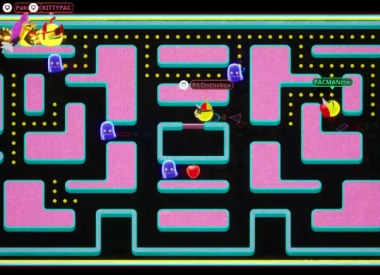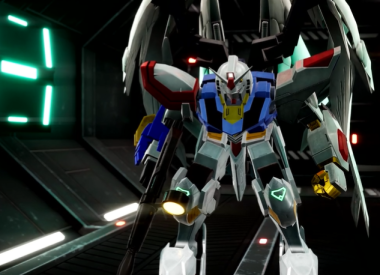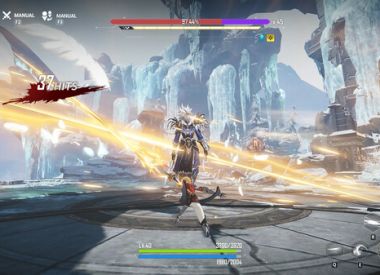Arkansas Head Coach Bret Bielema and STRIVR Co-founder Derek Belch sat down with USA Today Sportswriter George Schroeder to discuss how virtual reality can help professional and collegiate athletes in the training room at a SXSW panel. STRIVR has come up with a VR-system that can analyze football footage in hours, and have it available for players to review the next morning.
“Don’t do something in VR that you can do in the real world,” Belch said. “It’s not about sweating, or taxing yourself, it’s mental.”
With VR, players can step into a scenario, whether it be an offensive or defensive position, and start and pause a play as it unfolds around them. Coaches can point out to players something they missed on their right, and even more critically, VR can provide an opportunity to experience new situations, such as kicking at an opponent’s stadium or practicing the footwork on a play that was run through once earlier.
“Peyton Manning has a unique ability to process a large amount of information in a short amount of time,” Bielema said. “What jumped into my mind [when he was watching Manning’s retirement press conference] is that [with VR] we’re training every one of our players to be Peyton Manning. [VR] literally trains to see, react and handle the information as efficiently as you can in the shortest amount of time, and it’s all controlled by [the player].”
Bielema, who improved his first year record at Arkansas (3-9) in 2013 to 8-5 this past season, is a fan of using VR technology on the practice field. The team spent 15 minutes after each practice recording plays for their STRIVR library, storing more than 70 offensive plays that showcase core mechanics and concepts.
@BretBielema testing out the newest from @STRIVRlabs on the way to discuss it at #SXSW #wps pic.twitter.com/uowuI5DANj
— VidHogs (@VidHogs) March 10, 2016
“Now every quarterback, whether they got any reps that day or not, can get them done when virtual reality is involved,” Bielema said. “Video is very mundane, but this film is on a whole other level. It allows players to sit and watch video for 15 minutes instead of an hour and gather twice as much information. Players can take a rep with no wear and tear on their body and that is hugely valuable for them, and as a recruiting tool [as well].”
Belch, understandably, was enthusiastic about the possible applications of VR technology for sports training. The ex-Stanford kicker founded STRIVR — it literally stands for Sports Training in Virtual Reality — with Jeremy Bailenson, the head of Stanford’s Virtual Human Interaction Lab. Belch at the time was working as a graduate assistant coach for his old football team while completing his master’s thesis.
“VR is one piece of the puzzle, I’m not going to sit here and say that VR is going to make a quarterback amazing. But [it means something] when [a quarterback] comes to you and says, ‘when that happened in the game [earlier], I saw that last night in the VR [room],’” said Belch. “It’s all mental. We have guys who will practice their footwork. If you’re speeding your decision making time, you’re winning, and you don't need to throw a ball at a net [to do that].”
Players have come up to Bielema and tell him that if they had this technology when they were rookies, they could have advanced their career by five years.
The last time Bielema, who said he gets pitched constantly about experimental training technology, felt something on the same magnitude of awe as when he put on a STRIVR-powered headset was in the early 1990s, when he first encountered the streamlined video system for organizing and watching football film. Most of the pitches Bielema shoots down are “glorified video games, with no application,” but with STRIVR, Bielema knew what he “was seeing would change the game forever.”
Belch believes that secret sauce — “the biggest thing in VR” — is a sense of presence. Video game graphics don’t have this, Belch said. Players have learned how to shift the camera’s position on the practice field to maximize that feeling.
“If you don’t feel present, then it’s not worth $5 or $50,000. If the scene is one yard to the left to where it should be, it’s not worth it.” Belch said. “The second your presence drops, it doesn’t work anymore.”
The two problems Belch faces with implementing VR technology for sports training is movement, and nausea. Widespread adoption of VR technology, for Friday Night Lights type of organizations, won’t be possible according to Belch until there’s both reliable software that processes the footage, and consistent cameras that don’t make people feel sick.
“If a quarterback goes into a VR [session] before a team meal and walks out nauseous,” Belch said, “we’re done.” Belch believes the technology is two years away.
STRIVER is currently involved with 14 collegiate football teams, and six professional teams in the NFL, including the Dallas Cowboys said Belch. The company hopes to double the amount of NFL teams using their technology by next season.

















